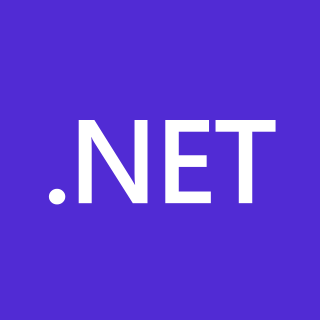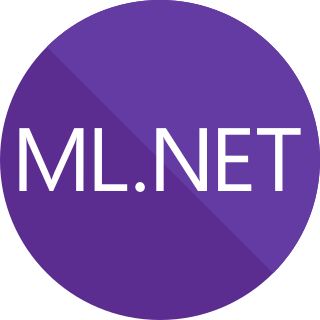The Common Language Infrastructure (CLI) is an open specification and technical standard originally developed by Microsoft and standardized by ISO/IEC and Ecma International that describes executable code and a runtime environment that allows multiple high-level languages to be used on different computer platforms without being rewritten for specific architectures. This implies it is platform agnostic. The .NET Framework, .NET and Mono are implementations of the CLI. The metadata format is also used to specify the API definitions exposed by the Windows Runtime.
Microsoft Developer Network (MSDN) was the division of Microsoft responsible for managing the firm's relationship with developers and testers, such as hardware developers interested in the operating system (OS), and software developers developing on the various OS platforms or using the API or scripting languages of Microsoft's applications. The relationship management was situated in assorted media: web sites, newsletters, developer conferences, trade media, blogs and DVD distribution.

Microsoft Visual Studio Express was a set of integrated development environments (IDEs) that Microsoft developed and released free of charge. They are function-limited version of the non-free Visual Studio and require mandatory registration. Express editions started with Visual Studio 2005.

Evince, also known as GNOME Document Viewer, is a free and open-source document viewer supporting many document file formats including PDF, PostScript, DjVu, TIFF, XPS and DVI. It is designed for the GNOME desktop environment.
Windows Presentation Foundation (WPF) is a free and open-source user interface framework for Windows-based desktop applications. WPF applications are based in .NET, and are primarily developed using C# and XAML.

MonoDevelop is a discontinued open-source integrated development environment for Linux, macOS, and Windows. Its primary focus is development of projects that use Mono and .NET Framework. MonoDevelop integrates features similar to those of NetBeans and Microsoft Visual Studio, such as automatic code completion, source control, a graphical user interface (GUI), and Web designer. MonoDevelop integrates a Gtk# GUI designer called Stetic. It supports Boo, C, C++, C#, CIL, D, F#, Java, Oxygene, Vala, JavaScript, TypeScript, and Visual Basic.NET. Although there is no word from the developers that it has been discontinued, nonetheless, it hasn't been updated in 4 years and is no longer installable on major operating systems, such as Ubuntu 22.04 and above.
CuneiForm Cognitive OpenOCR is a freely distributed open-source OCR system developed by Russian software company Cognitive Technologies.

Orchard is a free, open source, community-focused content management system written in ASP.NET platform using the ASP.NET MVC framework. Its vision is to create shared components for building ASP.NET applications and extensions, and specific applications that leverage these components to meet the needs of end-users, scripters, and developers.

LogicalDOC is a proprietary cloud-based document management system that is designed to handle and share documents within an organization. LogicalDOC is a content repository, with Lucene indexing, Activiti workflow, and a set of automatic import procedures. The system was developed using Java technology.

Xamarin is a Microsoft-owned San Francisco-based software company founded in May 2011 by the engineers that created Mono, Xamarin.Android and Xamarin.iOS, which are cross-platform implementations of the Common Language Infrastructure (CLI) and Common Language Specifications.
Microsoft Office shared tools are software components that are included in all Microsoft Office products.

.NET Compiler Platform, also known by its codename Roslyn, is a set of open-source compilers and code analysis APIs for C# and Visual Basic (VB.NET) languages from Microsoft.

Mono is a free and open-source software framework that aims to run software made for the .NET Framework on Linux and other OSes. Originally by Ximian which was acquired by Novell, it was later developed by Xamarin which was acquired by Microsoft. In August 2024, Microsoft transferred ownership of Mono to WineHQ.
Microsoft .NET Gadgeteer is an open-source rapid-prototyping standard for building small electronic devices using the Microsoft .NET Micro Framework and Microsoft Visual Studio/Visual C# Express.

The .NET platform is a free and open-source, managed computer software framework for Windows, Linux, and macOS operating systems. The project is mainly developed by Microsoft employees by way of the .NET Foundation and is released under an MIT License.

ML.NET is a free software machine learning library for the C# and F# programming languages. It also supports Python models when used together with NimbusML. The preview release of ML.NET included transforms for feature engineering like n-gram creation, and learners to handle binary classification, multi-class classification, and regression tasks. Additional ML tasks like anomaly detection and recommendation systems have since been added, and other approaches like deep learning will be included in future versions.
Microsoft, a technology company historically known for its opposition to the open source software paradigm, turned to embrace the approach in the 2010s. From the 1970s through 2000s under CEOs Bill Gates and Steve Ballmer, Microsoft viewed the community creation and sharing of communal code, later to be known as free and open source software, as a threat to its business, and both executives spoke negatively against it. In the 2010s, as the industry turned towards cloud, embedded, and mobile computing—technologies powered by open source advances—CEO Satya Nadella led Microsoft towards open source adoption although Microsoft's traditional Windows business continued to grow throughout this period generating revenues of 26.8 billion in the third quarter of 2018, while Microsoft's Azure cloud revenues nearly doubled.

Dapr is a free and open source runtime system designed to support cloud native and serverless computing. Its initial release supported SDKs and APIs for Java, .NET, Python, and Go, and targeted the Kubernetes cloud deployment system.










